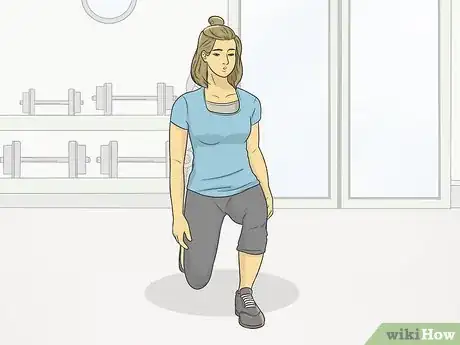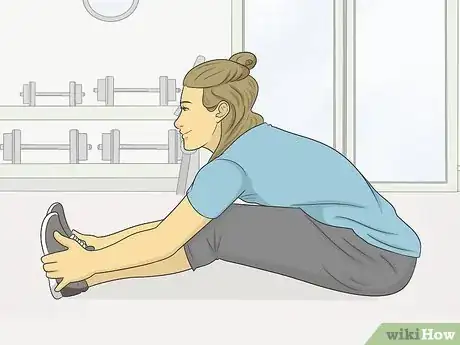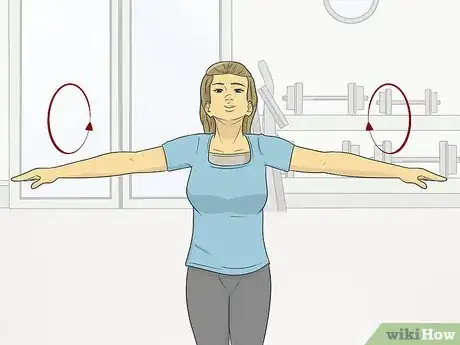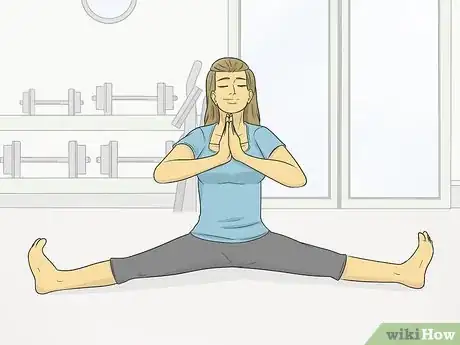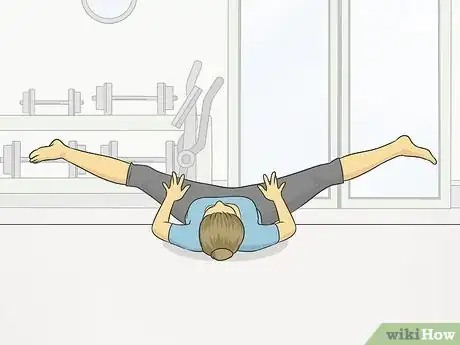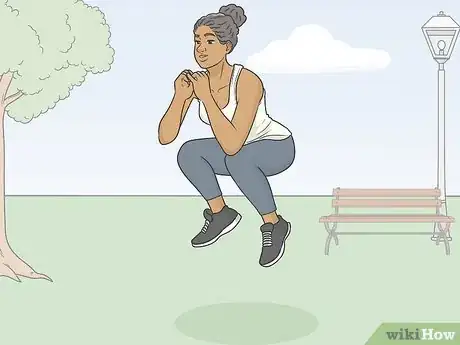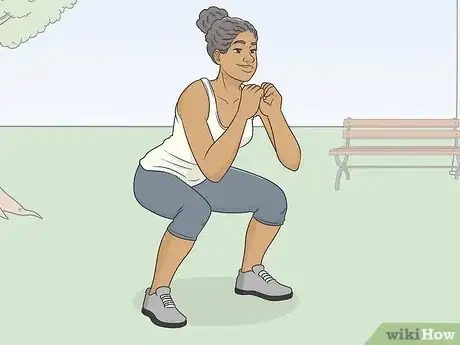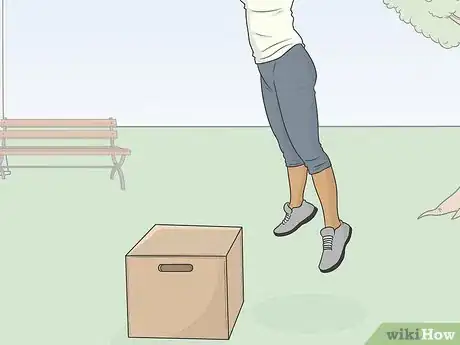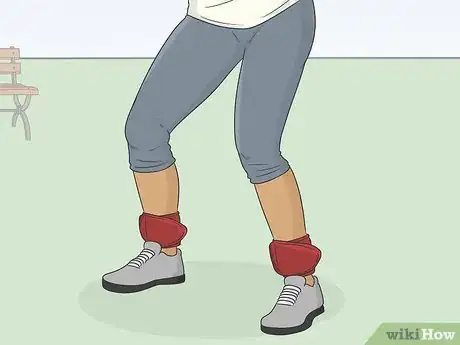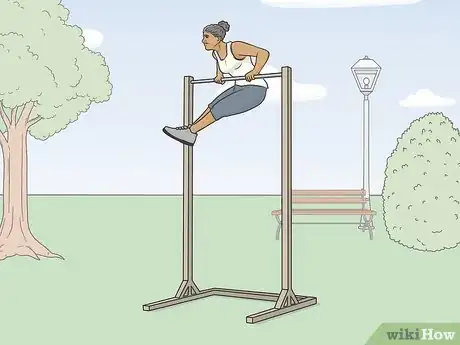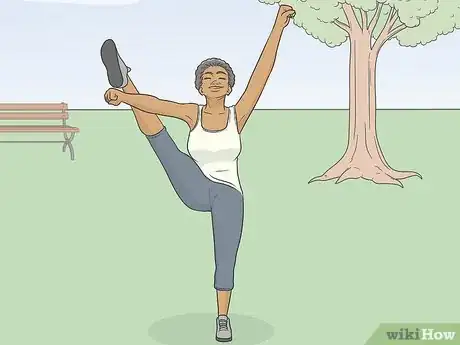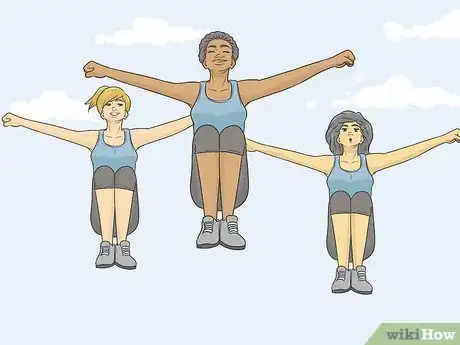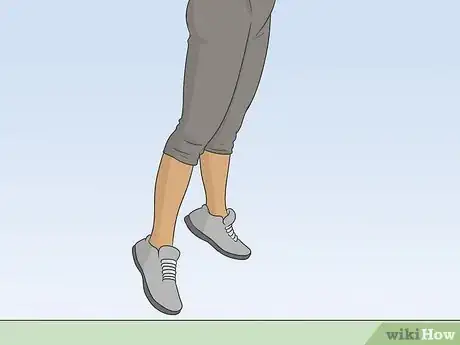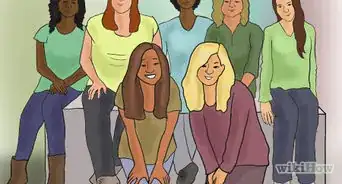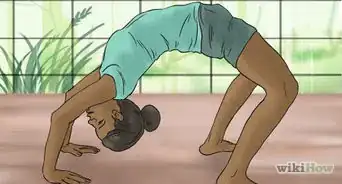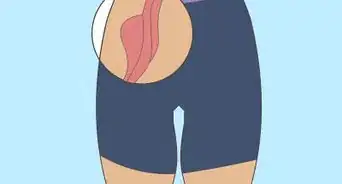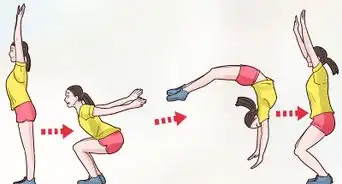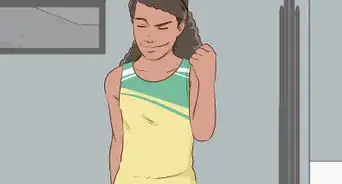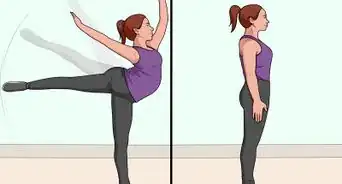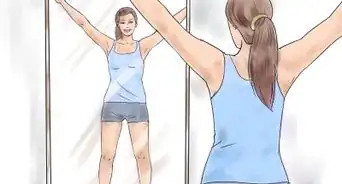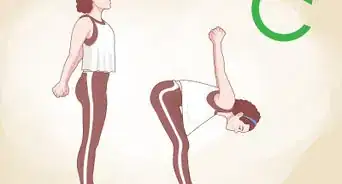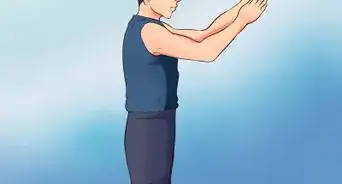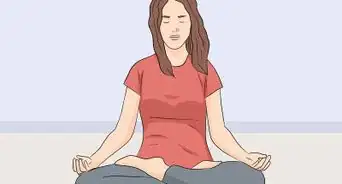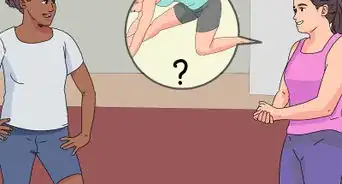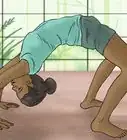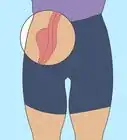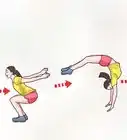This article was co-authored by Errol Ismail. Errol Ismail is a Personal Trainer and the CEO and Co-Founder of Maestro Training. With nearly 10 years of experience, Errol specializes in helping individuals incorporate exercise into their daily lives by making it convenient and creating a community of support and encouragement. Before starting his own company, he honed his craft at at Equinox, one of the most prestigious gyms in the USA.
There are 12 references cited in this article, which can be found at the bottom of the page.
wikiHow marks an article as reader-approved once it receives enough positive feedback. In this case, 86% of readers who voted found the article helpful, earning it our reader-approved status.
This article has been viewed 282,080 times.
Jumps are an essential part of cheerleading, and there are several different stretches and exercises to help you improve them. Always warm up and stretch before practicing your jumps to ensure you don't get hurt. Do simple stretches to work on your flexibility and muscle strength like lunges, squats, or seated forward bends. When it's time to practice jump drills, try pike pull ups, box training, or jump kicks.
Steps
Increasing Your Flexibility
-
1Complete lunges to strengthen your hamstrings and glutes.[1] Do 5-10 sets of lunges for each leg. To do a lunge, position one leg in front of you and one behind you. Bend your back knee so that you’re using your legs to balance, keeping the front knee bent as well with your front foot flat.[2]
- Stand in front of a mirror sideways to help you see whether you’re doing lunges correctly.
- When you lunge, each leg should create a 90 degree angle.
- Keep your back straight as you do lunges.
-
2Try the seated forward bend to stretch out your back. Sit on the floor with your feet stretched out in front of you. Sit up straight and move your arms above your head, slowly lowering them to your legs to try to touch your feet. Stretch down as far as you can without hurting yourself before slowly coming back up to a seated position.[3]
- Do this 5 times to stretch out your back, keeping it as straight as possible.
- Keep your legs straight and touching the entire time.
Advertisement -
3Move your arms in circles to loosen them up.[4] While you may not immediately think of your arms as essential to your cheer jumps, they’re important for your balance and help you jump higher. Stick your arms straight out on either side of you and move them in circles slowly for 5-10 seconds before reversing the direction.[5]
- Sit or stand up straight when doing arm exercises.
- Try doing tight, small circles and increase the size of your circles as you rotate your arms.
-
4Improve your jumps by doing straddle splits. Sit down on a flat surface and stretch out your legs to either side of you. Bend over to the left side by hinging at the waist while stretching your right arm over your head, and then to the right side with your left arm over your head, stretching out your straddle. Come to the middle as well, lowering your body as far down as possible while keeping your legs outstretched and straight.[6]
- Stretch for 15-20 seconds per position, keeping your back straight.
- Keep your toes pointed during this stretch if possible.
-
5Stretch your inner thighs by doing supine straddles. Lay on a flat surface on your back and create a wide straddle with your legs. Place each of your hands on top of your inner thighs and press down slightly to stretch out your straddle. Press down and let go of your legs 10 times while keeping them in a straddle to practice the stretch.[7]
- Keep your legs straight the entire time you’re stretching.
- As you're stretching out your legs, they should be moving towards the ground on either side of you.
Doing Jump Exercises
-
1Jump while bringing your knees up under you to practice your height. Bend your knees to gather momentum for your jump before jumping up as high as possible and tucking your knees up in front of you. Land with your knees bent to avoid hurting them. Do this 5-10 times to practice jumping higher and higher.[8]
- Avoid crouching over your knees as you jump and keep your head facing forward.
-
2Do squats to strengthen your legs and core.[9] Stand up straight with both feet planted flat on the floor, a little spread out from each other. Bend your knees and try to bring your bottom as low as possible, holding this pose for a few seconds before coming back up to a standing position. Do 5-10 squats to build your muscles and improve your jumps.[10]
- The better you become at squats, the longer you’ll be able to hold them.
- Avoid hunching your back as you're doing squats.
- Squats are a great way to work out if you don't have any exercise equipment at home.[11]
-
3Use boxes to train your legs to jump higher and more powerfully. Your local gym likely has boxes that you can use for jump training. Practice bending your legs and jumping onto the box while landing with both feet flat on the box. There are several other ways to use the box for training, such as jumping over the box or starting on the box and jumping off of it.[12]
- Always use boxes that are stable and designed for training.
- This form of training is called plyometrics.
-
4Attach weights to your ankles to improve your strength while jumping. Start off with light weights, such as 1–1.5 pounds (450–680 g) ones. Secure the weights onto each ankle before you jump, jumping 5-10 times with the weights on. The weights will make your legs feel heavier than they actually are, strengthening your legs and ankles so that you jump higher once you remove the weights.[13]
- Only attach weights to your ankles once you've mastered the specific type of jump you're doing.
- Be aware that ankle weights increase your risk of injury and may put more stress on your joints and muscles.
-
5Try pike pull ups to gain leg power. Hang from a pull up bar with your legs straight out in front of you. As you pull your body up using your arms, practice lifting your legs up in front of you to the bar, keeping them straight, before lowering them back down in front of you. Do 5-10 pike pull ups to strengthen your muscles.[14]
- Keep your toes pointed when doing pike pull ups.
-
6Do jump kicks to stretch out your legs. In a jump kick, you jump with one leg and use the other leg to kick the air as high as you can go. Do 5-10 of these, keeping your arms outstretched and switching legs to ensure they both get practice.[15]
- Start off doing the jump kicks slowly before increasing your speed.
-
7Practice jump drills with a friend or teammate. Jump drills are often done using 8-counts, helping you stay in rhythm as you're practicing each different jump. Create your own drill by deciding which jumps you'll do, such as hurdlers, toe touches, or T jumps. Do a certain number of each jump before immediately starting on the next jump.[16]
- For example, your drill might consist of 5 toe touches, 5 pikes, 5 hurdlers, 5 tucks, and 5 T jumps.
- Practice using the right arm movements for each jump, such as positioning your arms in a high V at the beginning of T jumps.
-
8Point your toes when you do each cheerleading jump. This makes your jumps look crisper and more professional. When you're doing exercises and drills, or even when you're stretching, focus on pointing your toes so it becomes a natural habit.[17]
Community Q&A
-
QuestionHow can I keep my balance when I land?
 Community AnswerWhen you land for cheer you have to land "clean" which means with your hands to your sides and standing up straight. In order to keep your balance, bend your knees slightly when you land and keep your body tight. As you land, stand up straight with arms to your sides. Practice on a mini trampoline. Start by bouncing into the jump as if playing on the trampoline, then slowly bounce less until you can do the jump without having to bounce to get good results, then move to doing the jumps on the ground.
Community AnswerWhen you land for cheer you have to land "clean" which means with your hands to your sides and standing up straight. In order to keep your balance, bend your knees slightly when you land and keep your body tight. As you land, stand up straight with arms to your sides. Practice on a mini trampoline. Start by bouncing into the jump as if playing on the trampoline, then slowly bounce less until you can do the jump without having to bounce to get good results, then move to doing the jumps on the ground. -
QuestionCan I still become a cheerleader at the age of 12 even though I have no experience?
 Community AnswerYes, you can become a cheerleader at any age as long as you are determined and try your hardest. Remember, practice makes perfect!
Community AnswerYes, you can become a cheerleader at any age as long as you are determined and try your hardest. Remember, practice makes perfect! -
QuestionHow can I get my legs to go higher and wider for a toe touch?
 Community AnswerPut ankle weights on your legs and do your jumps for 10 minutes every day for a week.
Community AnswerPut ankle weights on your legs and do your jumps for 10 minutes every day for a week.
Warnings
- Do jumps in an area with enough space to ensure you don't get hurt.⧼thumbs_response⧽
References
- ↑ Elisabeth Weiss. Professional Dog Trainer. Expert Interview. 3 September 2020.
- ↑ https://www.sportsrec.com/types-splits-8300494.html
- ↑ https://www.sportsrec.com/types-splits-8300494.html
- ↑ Elisabeth Weiss. Professional Dog Trainer. Expert Interview. 3 September 2020.
- ↑ https://www.sportsrec.com/types-splits-8300494.html
- ↑ https://www.youtube.com/watch?v=ZFVNHW3kRoo#t=52s
- ↑ https://www.youtube.com/watch?v=ilRxBXSB4TY#t=30s
- ↑ https://www.youtube.com/watch?v=_v8xHDXv6xM#t=3m5s
- ↑ Elisabeth Weiss. Professional Dog Trainer. Expert Interview. 3 September 2020.
- ↑ http://wsacheer.com/one-exercise-improve-jumps-tumbling/
- ↑ Alphonso White. Certified Personal Trainer, CompleteBody NYC. Expert Interview. 24 February 2021.
- ↑ https://www.sportsrec.com/5176480/ways-to-train-for-higher-cheerleading-jumps
- ↑ https://www.americancheerleader.com/add-some-lift-to-your-jumps/
- ↑ https://www.youtube.com/watch?v=f8V9a8f0fsA#t=17s
- ↑ https://www.youtube.com/watch?v=-v4B81J4j9k&t=82s
- ↑ https://www.sportsrec.com/5176480/ways-to-train-for-higher-cheerleading-jumps
- ↑ https://www.sportsrec.com/513569-how-to-improve-your-straddle-jump.html
About This Article
To improve your cheer jumps, use some simple stretches and exercises. Before and after jumping, make sure to stretch so your body has a great range of motion. Try stretches like seated toe touches, which will help make your jumps more dynamic. If you want to take your jumps to the next level, try doing them with ankle weights on, which will build your leg muscles and make your jumps even better when you take them off. Jumps also require core muscle strength, so add ab crunches to your routine for stronger, higher jumps. And don’t forget to stay hydrated while practicing your jumps to keep your muscles pliable. To learn how to practice jump drills, keep reading!
